Semiconductor relays — types, device and principle of operation
Many readers, hearing the word "relay", will certainly imagine a coil in the core of which a moving contact is attracted. And this is not at all surprising, because originally relays were always electromagnetic, and the word "relay" is generally understood to mean an electromagnetic device for opening and closing an electric circuit.
Nevertheless, for a long time, semiconductor switches have been used to switch electrical circuits in various areas of technology: transistors, thyristors, triacs. Semiconductor advances and relays have not been spared.
Despite the fact that circuits with large currents and voltages are traditionally switched with the help of electromagnetic relays, today it is already possible to implement stable and powerful semiconductor electrical switches. Such switches are semiconductor relays or solid state relays (from English Solid-state relay, abbreviated SSR).
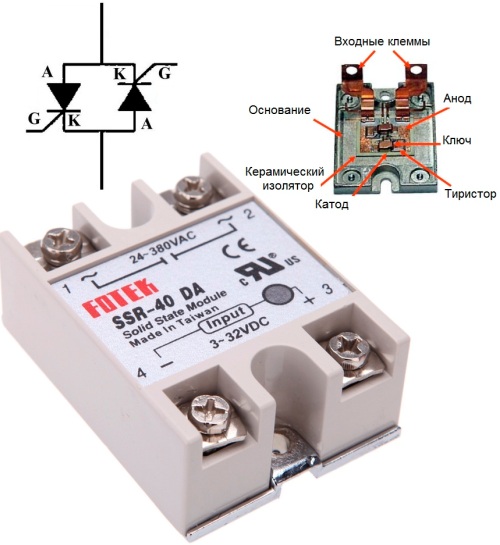
Thus, the semiconductor relay is now a fully electronic device, without a movable mechanical contact, which serves to turn on / off powerful loads in power circuits by supplying a low control voltage to the control input of the electronic device.
Inside the solid-state (solid-state) relay housing is a sensing circuit that responds to the control signal, as well as a power supply section—solid-state electronics on the side of the high-power circuit.
Such relays are used in DC and AC circuits, where they perform the same functions as earlier mechanical electromagnetic relays and contactors, only now the problem is solved without moving parts in the switching circuit. As a result, thanks to the powerful thyristors, triacs and transistors integrated into the relay housings, it became possible to switch currents up to hundreds of amperes without resorting to mechanical components.
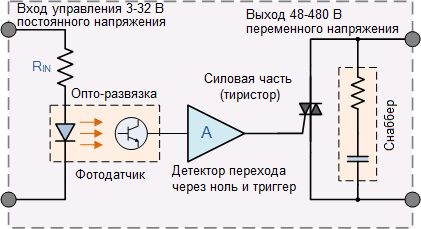
Compared to electromechanical relays, solid state relays have a higher safe switching speed of the order of hundreds of microseconds, while the control circuit and power circuit are completely galvanically isolated from each other (optocouple isolation is usually used).
Solid-state relays are able to withstand overload on the switching side for a short time and remain in service, which electromechanical ancestors cannot boast of. At the same time, the solid-state relay works silently, has compact dimensions, the contacts here do not oxidize (since there are no contacts as such), there are no sparks, the device is not afraid of either dust or vibration.
Of course, the resistance of the semi-conductor compound of the relay in the conducting state is non-linear, and at high switched currents the device needs cooling at all, but the pluses definitely overlap these conventional minuses. In addition, the lifetime of a solid-state relay is measured in millions of switching cycles.
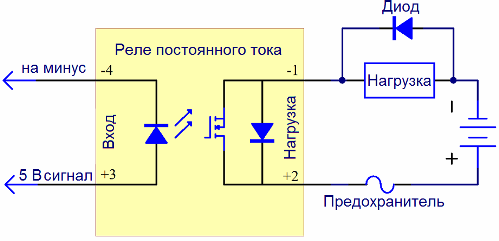
Solid-state relays are single-phase or three-phase, for DC or AC switching. AC switching relays have a built-in zero-crossing sensor, so that switching takes place at practically zero current, without damage to the solid-state switch, without dangerous current surges from inductive loads.
Thyristors or triacs serve as switches in an AC relay, and the field or IGBT transistors… Power is supplied to the control circuit directly from the control signal source, and the control current does not exceed a few milliamps, and the switching current can be tens or hundreds of amperes.
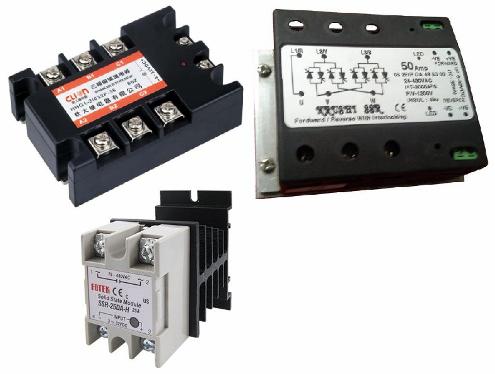
Non-reversing and reversing three-phase solid-state relays are available. Three-phase reversing relays have two control inputs, and at the output one of the phases may not change its position at all.
Compared to bulky mechanical magnetic starters, compact semiconductor relays work silently and do not wear out, you do not need to periodically clean the contacts, and for powerful loads it is enough to provide the relay housing with good cooling, in some cases the radiator will except, the installation for it is provided.
As for dusty and explosive industrial production, here the solid-state relay turns out to be a real savior, since the arc of mechanical contacts is excluded due to its absence, and the sealed housing of the relay will not allow the electronics to get dirty.
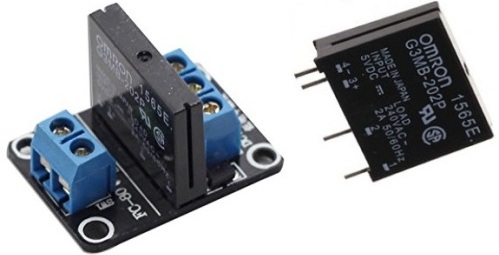
Miniature solid state relays in a plastic housing are available for PCB mounting. Such relays can switch currents up to 2 amperes at a mains voltage of 220-240 volts, for example, a fan or pump, a lamp or even a small radiator can be switched on with a 5-volt digital signal from a sensor, which is usually very important for DIY enthusiasts home automation systems.
